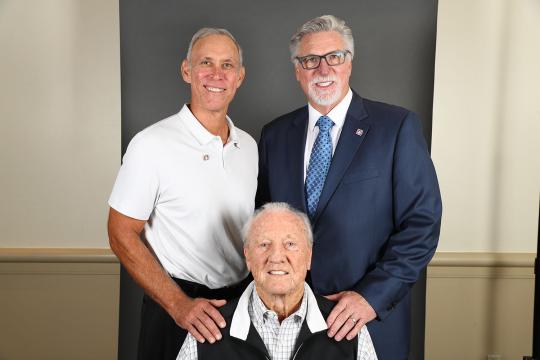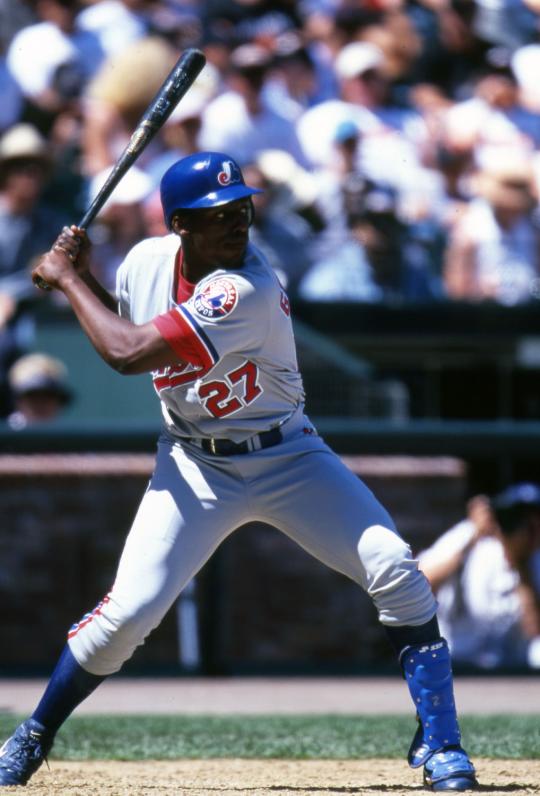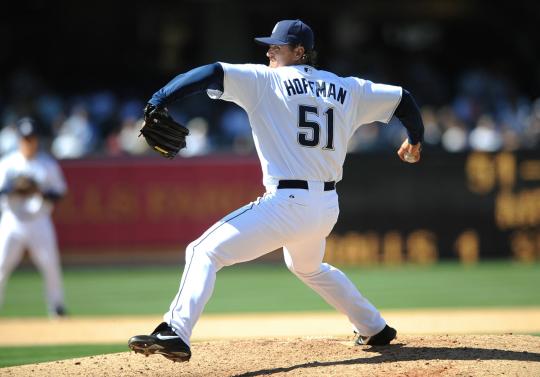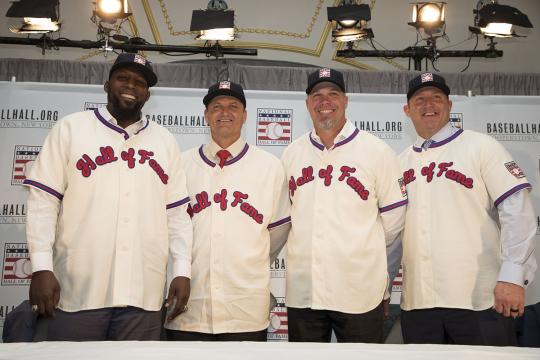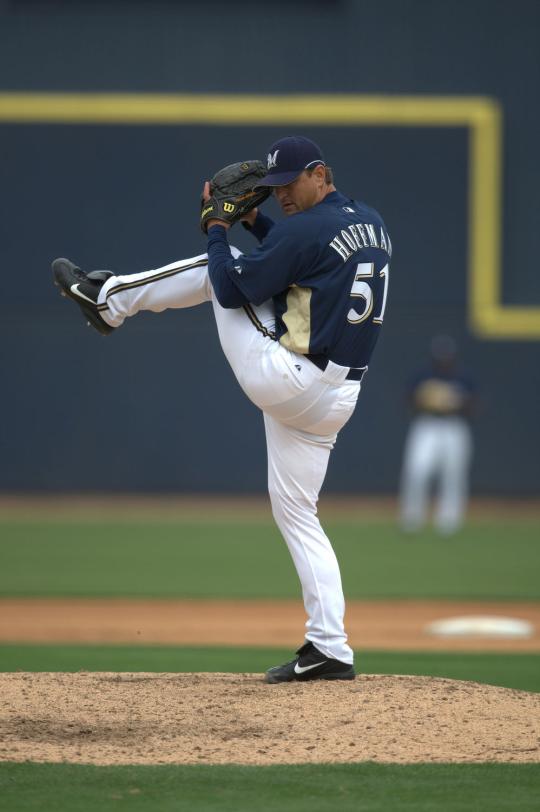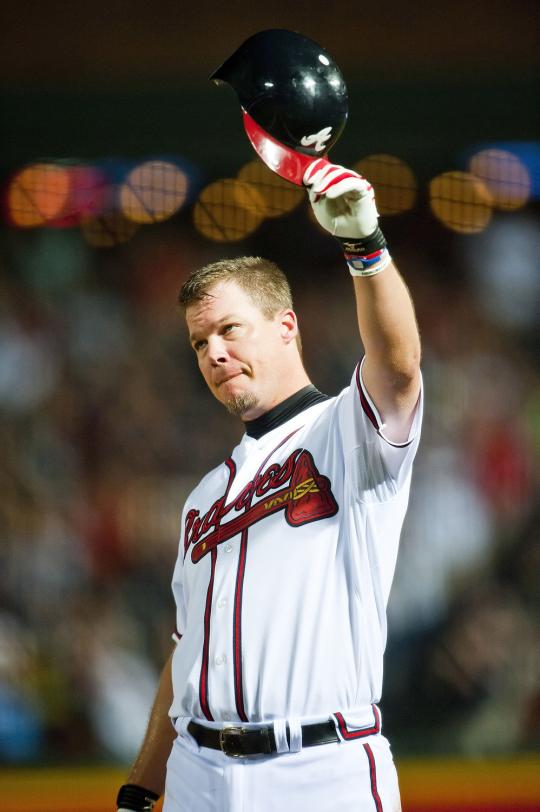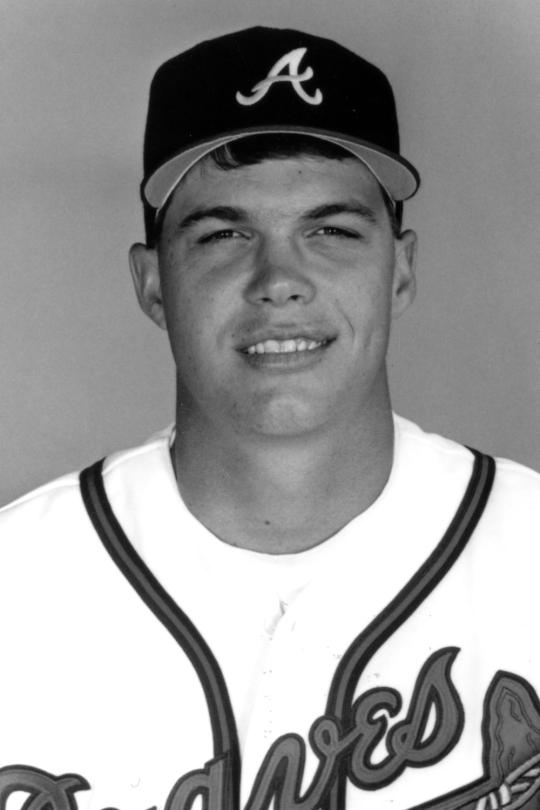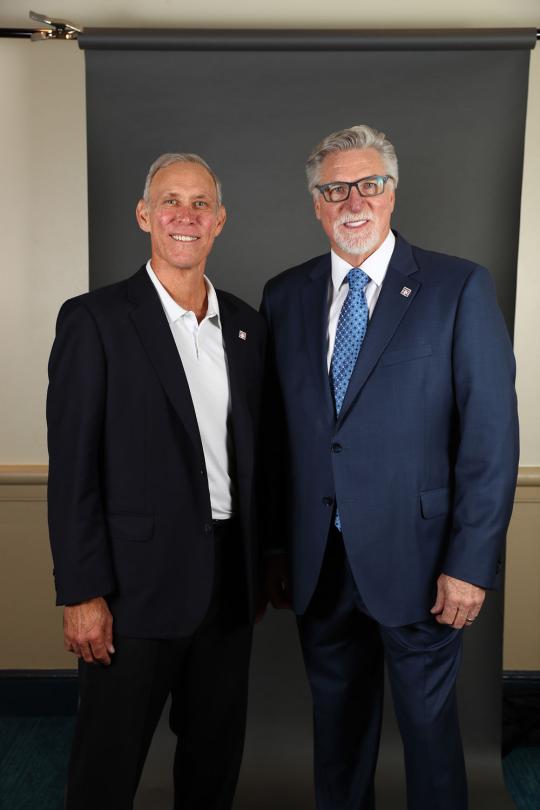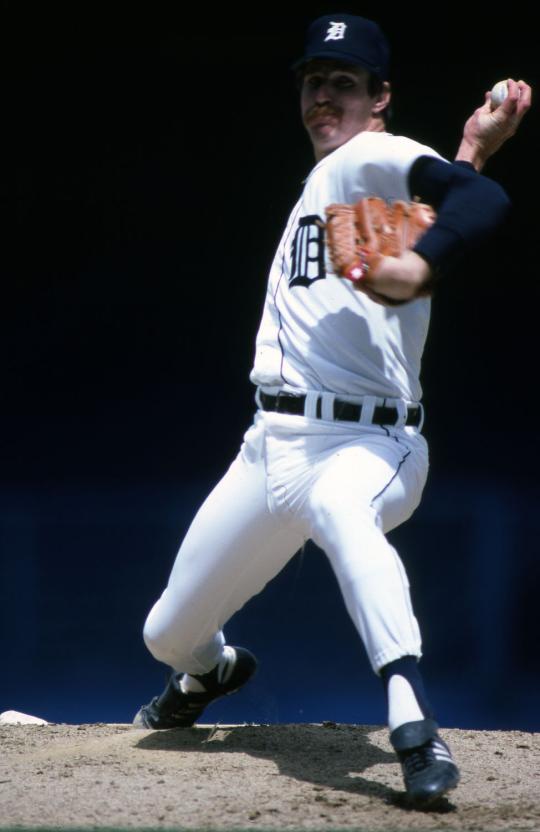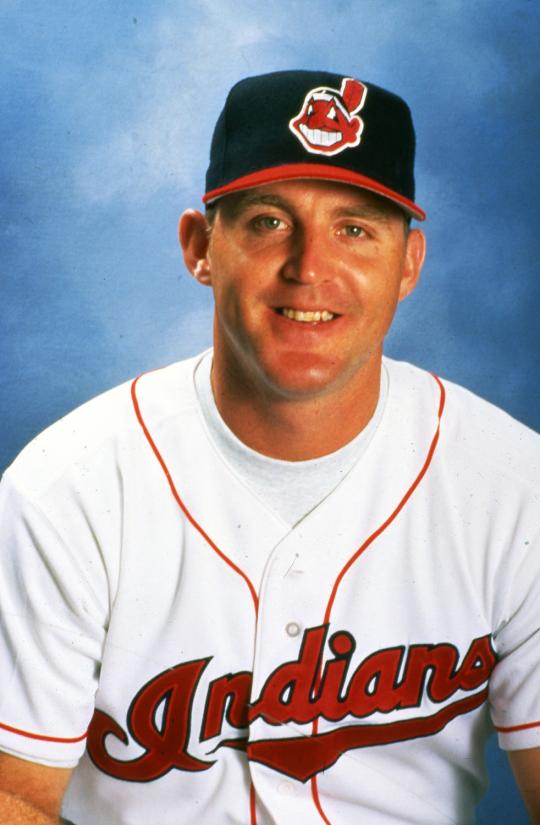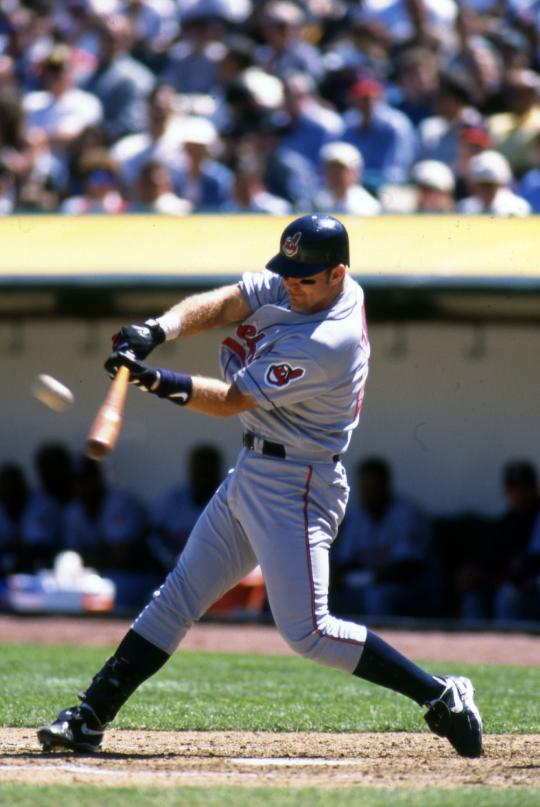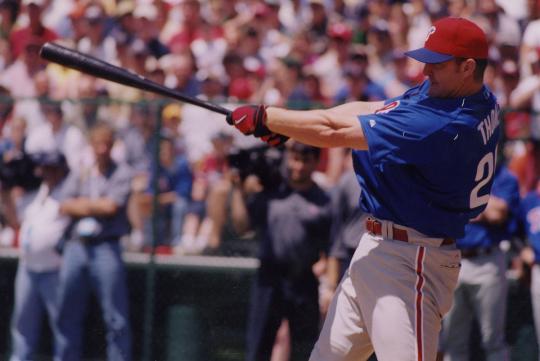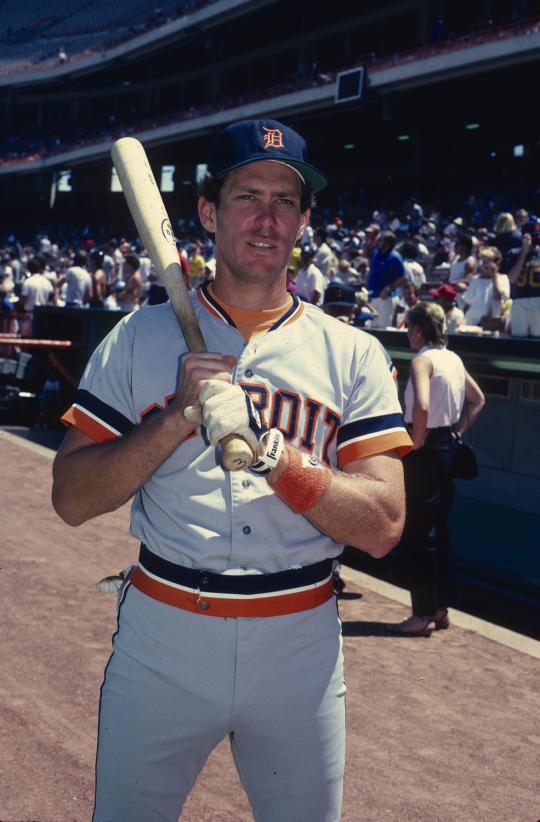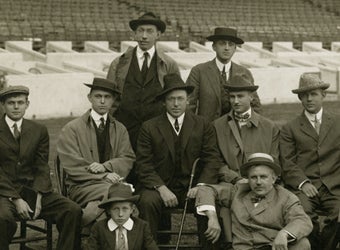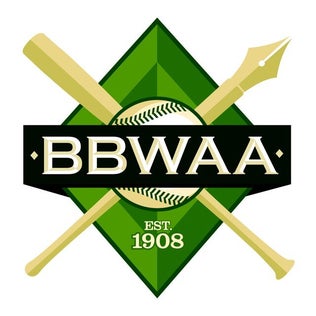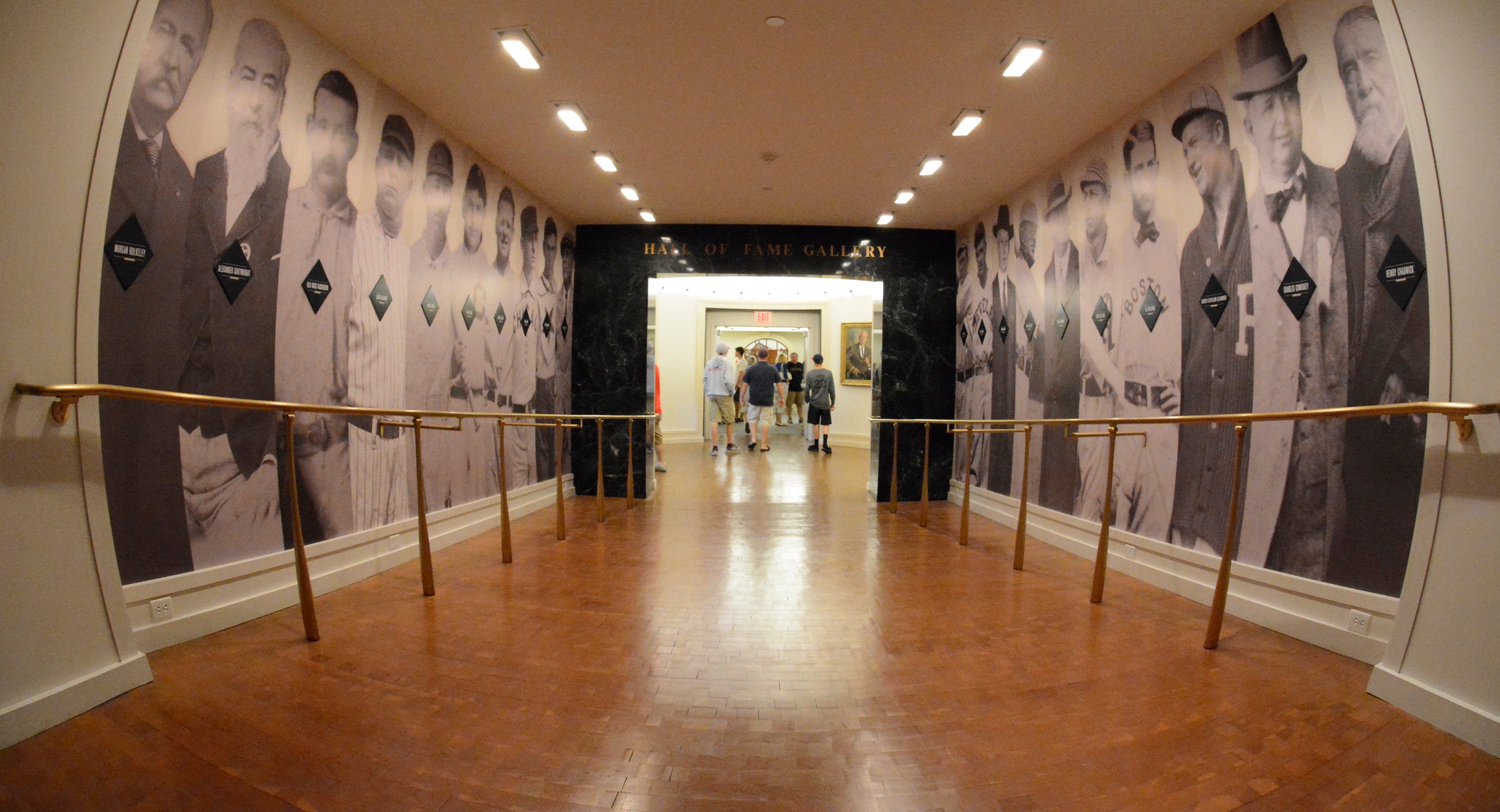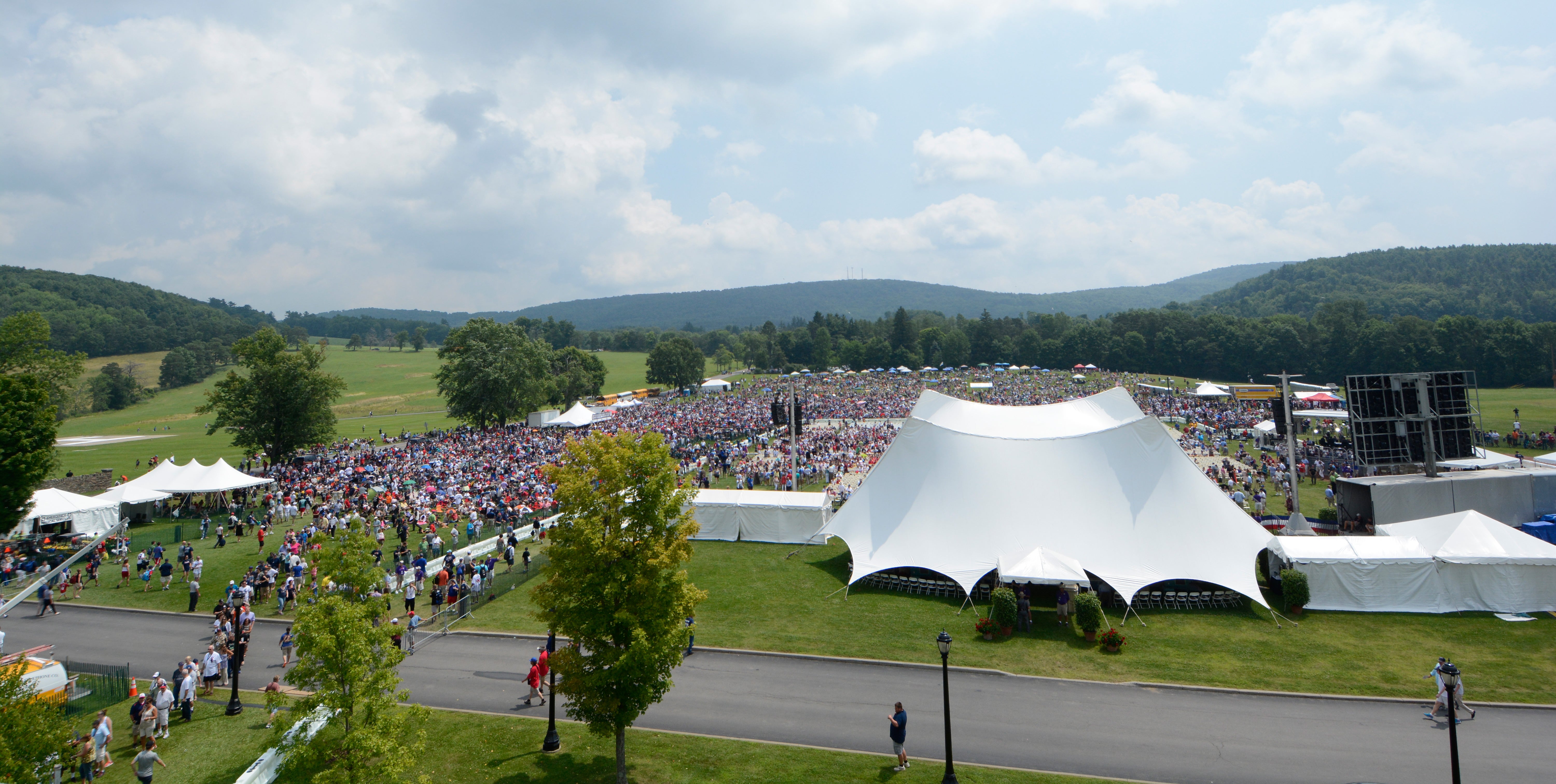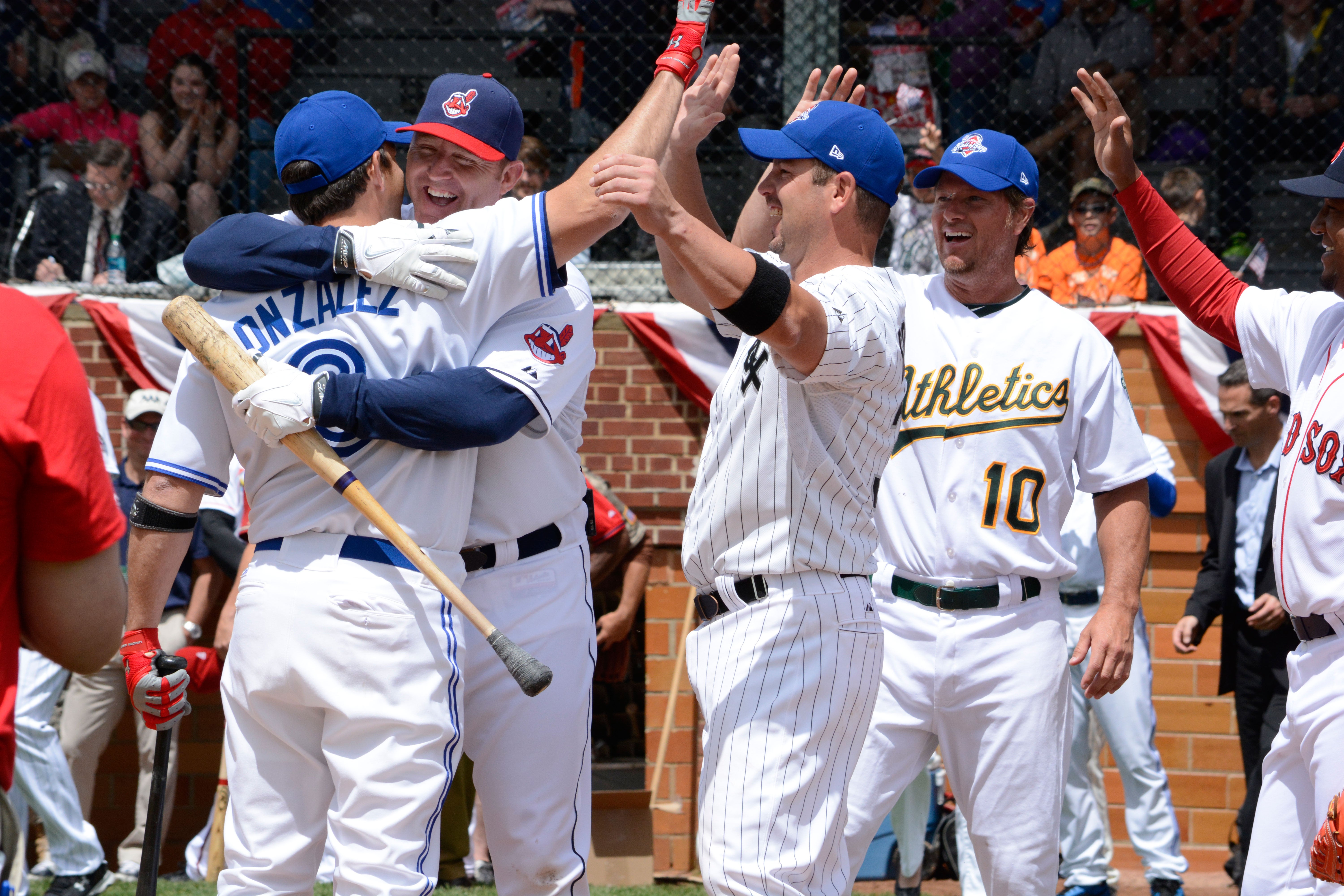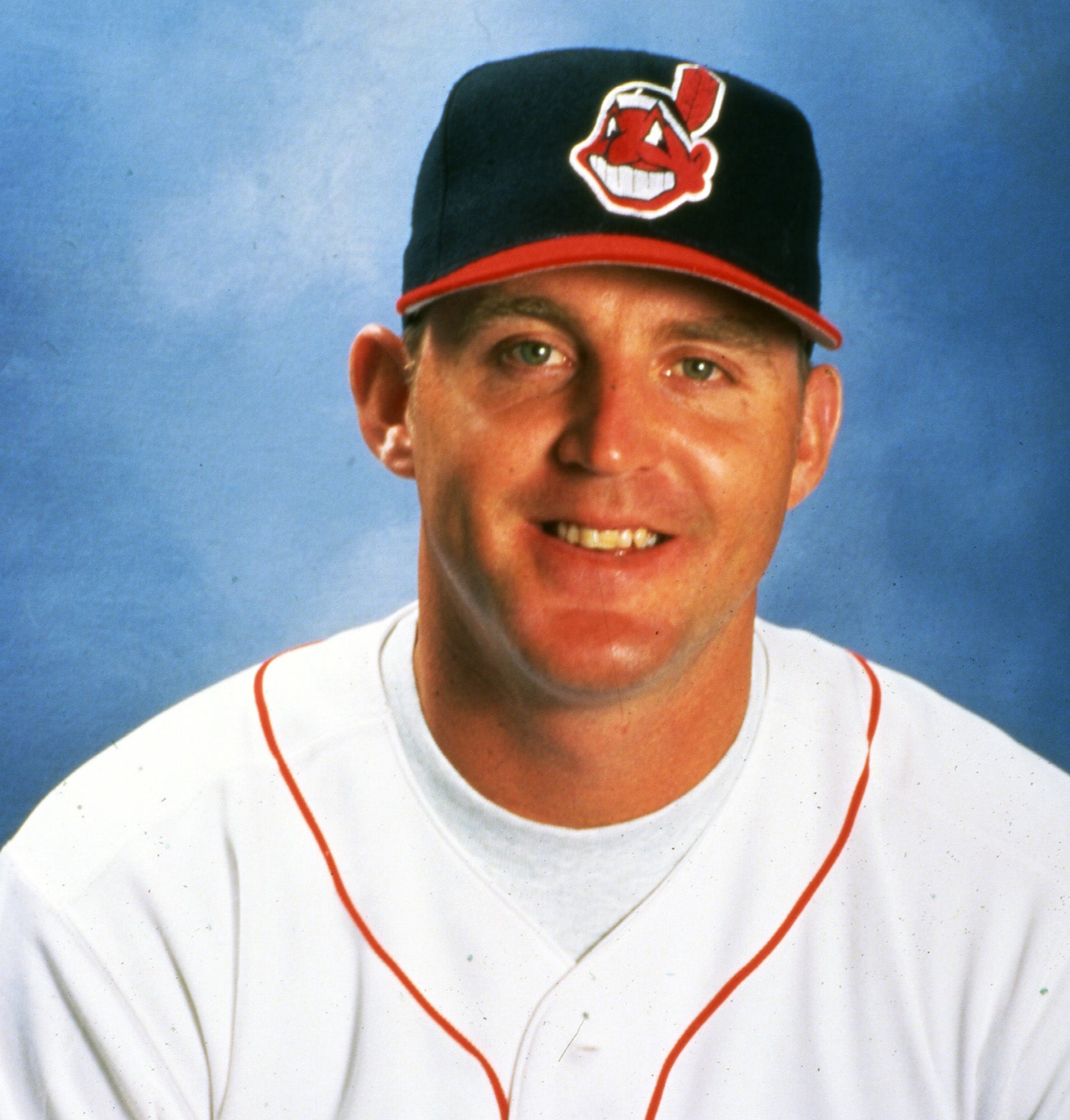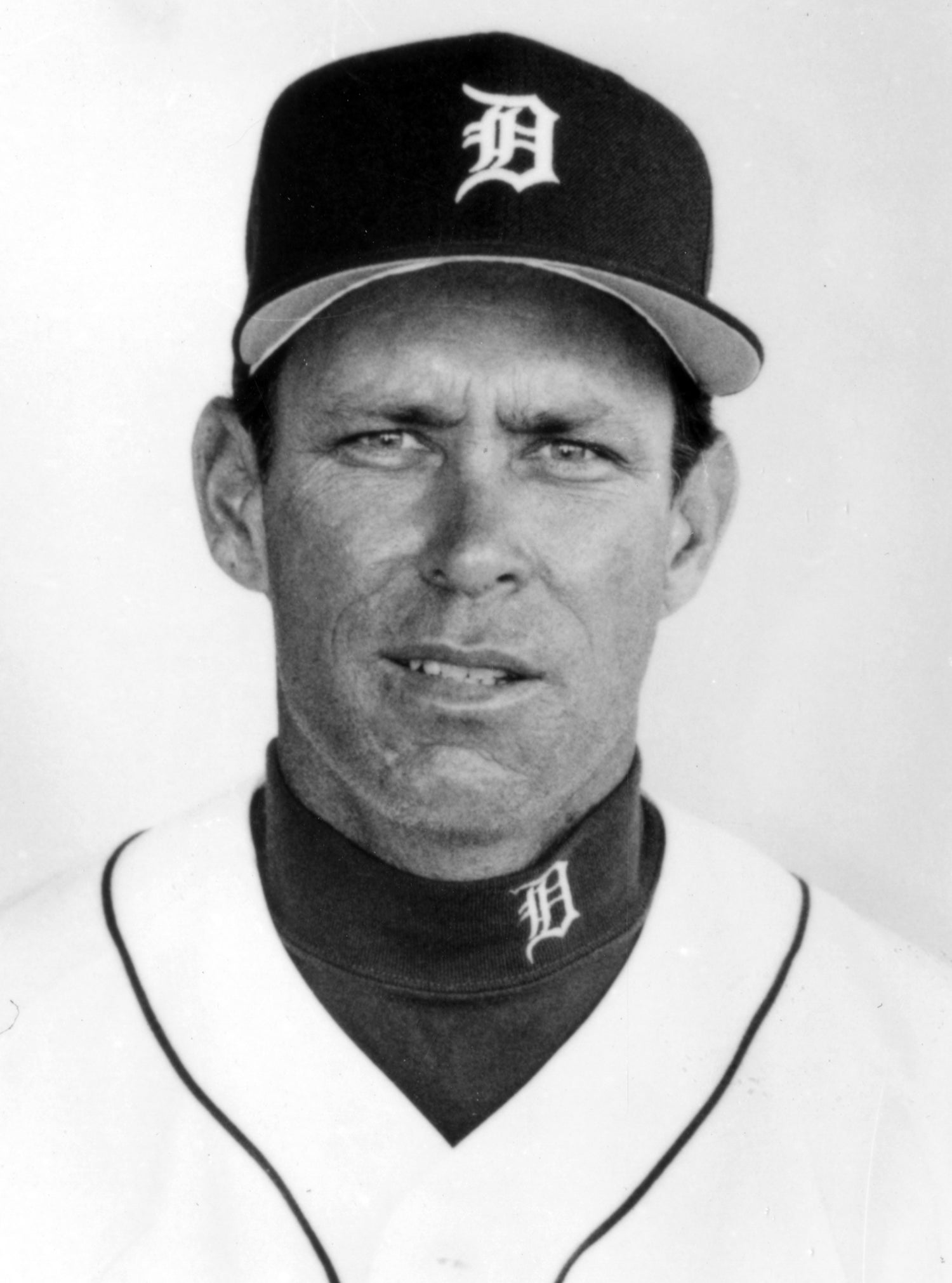- Home
- Our Stories
- Hall of Fame Class of 2018
Hall of Fame Class of 2018
The game’s most exclusive fraternity will grow by six members in 2018. Vladimir Guerrero, Trevor Hoffman, Chipper Jones, Jack Morris, Jim Thome and Alan Trammell will be inducted into the Hall of Fame on Sunday, July 29 in Cooperstown. Guerrero, Hoffman, Jones and Thome earned election via the Baseball Writers’ Association of America vote in January, while Morris and Trammell were elected by the Modern Baseball Era Committee in December. There are now 323 elected members of the Hall of Fame. Hall of Fame Weekend will also feature the presentation of the Ford C. Frick Award for broadcasters to Bob Costas and the J.G. Taylor Spink Award to Sheldon Ocker.
Since the inaugural Class of 1936, the National Baseball Hall of Fame has honored the game’s legendary players, managers, umpires and executives. Included in the 323 Hall of Famers are 226 former major league players, 30 executives, 35 Negro Leaguers, 22 managers and 10 umpires. The BBWAA has elected 128 candidates to the Hall while the veterans committees (in all forms) have chosen 169 deserving candidates (98 major leaguers, 30 executives, 22 managers, 10 umpires and nine Negro Leaguers). The defunct “Committee on Negro Baseball Leagues” selected nine men between 1971-77 and the Special Committee on Negro Leagues in 2006 elected 17 Negro Leaguers.
There are currently 77 living members.
Hall of Fame Membership
There is no simpler, and more essential, way to demonstrate your support than to sign on as a Museum Member.
Voting Results
BBWAA
| Ballots Cast: 422 | Needed for Election: 317 |
| Votes | Percentage | |
| 410 | Chipper Jones | 97.2% |
| 392 | Vladimir Guerrero | 92.9% |
| 379 | Jim Thome | 89.8% |
| 337 | Trevor Hoffman | 79.9% |
| 297 | Edgar Martínez | 70.4% |
| 268 | Mike Mussina | 63.5% |
| 242 | Roger Clemens | 57.3% |
| 238 | Barry Bonds | 56.4% |
| 216 | Curt Schilling | 51.2% |
| 156 | Omar Vizquel | 37.0% |
| 144 | Larry Walker | 34.1% |
| 98 | Fred McGriff | 23.2% |
| 93 | Manny Ramírez | 22.0% |
| 61 | Jeff Kent | 14.5% |
| 47 | Gary Sheffield | 11.1% |
| 47 | Billy Wagner | 11.1% |
| 43 | Scott Rolen | 10.2% |
| 33 | Sammy Sosa | 7.8% |
| 31 | Andruw Jones | 7.3% |
| 10 | Jamie Moyer | 2.4% |
| 10 | Johan Santana | 2.4% |
| 8 | Johnny Damon | 1.9% |
| 4 | Hideki Matsui | 0.9% |
| 2 | Chris Carpenter | 0.5% |
| 2 | Kerry Wood | 0.5% |
| 1 | Liván Hernández | 0.2% |
| 1 | Carlos Lee | 0.2% |
| 0 | Orlando Hudson | 0.0% |
| 0 | Aubrey Huff | 0.0% |
| 0 | Jason Isringhausen | 0.0% |
| 0 | Brad Lidge | 0.0% |
| 0 | Kevin Millwood | 0.0% |
| 0 | Carlos Zambrano | 0.0% |
*All candidates in italics received less than 5% of the vote on ballots cast and will be removed from future BBWAA consideration
Modern Baseball Era Election
12 Votes Needed for Election
- Jack Morris 14 votes, 87.5
- Alan Trammell 13 votes, 81.3%
- Ted Simmons 11 votes, 68.8%
- Marvin Miller 7 votes, 43.8%
Steve Garvey, Tommy John, Don Mattingly, Dale Murphy, Dave Parker and Luis Tiant each received fewer than seven votes.
Vladimir Guerrero
He was a throwback to a different era, when batting gloves were shunned and pine tar was a badge of honor. Vladimir Guerrero wasn’t about style points. What he left behind in substance, however, was a legacy of power and production. And – now – a plaque at the Hall of Fame. Born Feb. 9, 1975 in Nizao, Dominican Republic, Guerrero played baseball barefoot as a youth, using a stick for a bat and lemons wrapped in rags for balls. He was signed by the Expos at age 18, and quickly established himself as one of baseball’s top prospects. After hitting .360 en route to the Eastern League’s Most Valuable Player Award in Double-A Harrisburg in 1996, Guerrero was rated the game’s No. 2 prospect by Baseball America heading into 1997 and drew comparisons to Hall of Famer Roberto Clemente by veteran major leaguers.
Guerrero hit .302 with 11 homers and 40 RBI in 90 games in 1997 with Montreal, the emerged onto the national scene in 1998 with a .324 average, 38 home runs and 109 RBI as the Expos starting right fielder. In his seven full seasons with the Expos, Guerrero averaged 33 home runs, 100 RBI and 173 hits, coming within one home run in 2002 of reaching the 40/40 mark in home runs and stolen bases. He signed with the Angels as a free agent following the 2003 season, and in 2004 won the American League Most Valuable Player Award after hitting 39 home runs, driving in 126 runs and leading the AL in runs scored (124) and total bases (366). A notorious bad-ball hitter and free swinger, Guerrero nonetheless never struck out more than 95 times in any season. Without the use of batting gloves and with pine tar covering his bat and helmet, Guerrero seemed able to hit virtually any pitch with authority. Of all the players in baseball history with at least 449 career home runs, only Stan Musial, Ted Williams, Lou Gehrig and Mel Ott struck out less frequently that Guerrero. Guerrero played six seasons with the Angels before finishing his career with stints in Texas and Baltimore. He retired following the 2011 season with a .318 career batting average, 449 home runs, 1,496 RBI and 2,590 hits. He was named to nine All-Star Games, won eight Silver Slugger Awards and led his league in assists twice as an outfielder. His 31-game hitting streak in 1999 remains tied for 25th on the all-time list. Of all the non-active players whose careers started after 1939, only Wade Boggs, Rod Carew, Tony Gwynn, Stan Musial and Kirby Puckett posted a higher career batting average than Guerrero.
Trevor Hoffman
Playing a position traditionally associated with aggression and high velocity, a converted infielder with just one kidney and a diminished fastball became one of the most accomplished closers in history.
Now, Trevor Hoffman closes out his career with the ultimate achievement: Election to the Hall of Fame.
Born Oct. 13, 1967 in Bellflower, Calif., Hoffman grew up in a baseball-centric atmosphere. His father, Ed, was a former Marine who became a fan-favorite as “The Singing Usher” at Los Angeles Angels games, while his older brother Glenn played shortstop for nine seasons in the major leagues.
But for Hoffman, success on the diamond was far from certain. Just six weeks after birth, Hoffman had a damaged kidney removed and was not allowed to play contact sports. Hoffman followed his older brother into baseball, batting .371 as a 150-pound shortstop during his junior season at the University of Arizona. In 1989, Hoffman signed a $3,000 contract as the Cincinnati Reds’ 11th-round draft choice.
After struggling both at the plate and in the field for the Class A Charleston Wheelers, Hoffman switched to pitching at manager Jim Lett’s suggestion. The right-hander found immediate success with a 95 mile-per-hour fastball and shot up through the minor leagues. In 1992, the Reds left Hoffman unprotected in the 1992 Expansion Draft, and he was snatched up by the brand new Florida Marlins franchise.
Hoffman showed immediate promise the following season in Miami, saving two games before becoming involved in one of the year’s biggest trades. On June 24, 1993, the San Diego Padres agreed to send third baseman Gary Sheffield, who had won the 1992 National League batting crown and nearly achieved the Triple Crown, and pitcher Rich Rodriguez to Florida in exchange for three prospects – including Hoffman.
Though the trade was heavily criticized by San Diego fans and media, Hoffman would soon win over the Friars’ faithful.
But before he did, Hoffman had to overcome one more physical hurdle. During the 1994 players’ strike, Hoffman injured his right shoulder twice in one day while playing sports on the beach. He subsequently saw his fastball velocity wither from 95 mph to just below 90 – a potentially career-ending reduction for a power closer.
Looking for an alternative out pitch, Hoffman adopted a discarded changeup grip (one that closely resembled a palmball) from teammate Donnie Elliott. From that day on, his career would be forever changed.
Nicknamed “the Bugs Bunny pitch” by teammates for how it made opposing hitters look silly, Hoffman’s fading mid-70s changeup proved nearly unhittable for National League hitters.
Hoffman’s brilliance in the Padres’ bullpen quickly helped San Diego rise to a National League contender. In September 1996, he saved the season’s final three games against the Los Angeles Dodgers to lead the Padres to their first division title in 12 years. The following June, Hoffman earned his 109th save to surpass Hall of Famer Rollie Fingers as the franchise’s all-time leader.
Fingers’ record was only the beginning for Hoffman. In 1998, he enjoyed one his best big league seasons, setting an MLB record (since broken) with 41 consecutive converted saves, finishing runner-up finish in the NL CY Young Award race and saving three games in the NL playoffs to help lead the Padres to the World Series. At the same time, Hoffman garnered national attention for entering the ballpark to the tune of AC/DC’s “Hell’s Bell’s,” a ritual that came to be known among the Friars’ faithful as “Trevor Time.”
Though the Padres regressed after their Fall Classic run, Hoffman continued to improve. He was an All-Star Game selection in 1999, 2000 and 2002, and set an MLB record with his fourth consecutive 40-save season in 2001. Most remarkably, he did so even as his fastball kept getting slower, eventually settling below 85 mph.
“He throws a pitch that looks so tempting that you can't lay off it,” said future Hall of Famer Randy Johnson. “I feel vulnerable when I throw 93-96 miles per hour. He's throwing 81 and doing it with full confidence.”
After missing most of 2003 to recover from two offseason shoulder surgeries, Hoffman returned in 2004 as good as new, earning 41 saves with a 2.30 ERA. As the years progressed, the steady closer kept rising through the all-time lists until he reached the ultimate summit: Lee Smith’s record 478 saves. On Sept. 24, 2006 – the Padres final home game of the year – Hoffman ran out of the bullpen to the customary toll of “Hell’s Bells” and promptly shut down the Pittsburgh Pirates to become baseball’s all-time saves king. Though New York Yankees closer Mariano Rivera would eventually break Hoffman’s record, the Padres legend will forever be the first man to reach the 500- and 600-save milestones. After 16 years in San Diego, Hoffman signed with Milwaukee and played his final two seasons – including a 37-save All-Star season at age 41 – with the Brewers. In January 2011, Hoffman announced his retirement at San Diego’s Petco Park. His totals after 18 major league seasons rank as some of the all-time best: 601 saves (2nd all-time), 856 games finished (2nd), a 1.06 walks and hits per inning ratio (8th), 9.36 strikeouts per nine innings (8th) and a 2.87 career ERA. His save percentage of 88.8 ranks second among all pitchers with at least 400 saves.
Chipper Jones
He was the premier position player on the Atlanta Braves of the 1990s and 2000s, a club defined by its pitching.
But Chipper Jones made sure those Braves teams had a potent offense as well – one that resulted in 11 straight trips to the Postseason for Jones’ Braves.
Now, he’s earned a place in Cooperstown.
Larry Wayne Jones was born April 24, 1972 in DeLand, Fla., and was raised in nearby Pierson. A two-sport athlete in high school who chose baseball over college football opportunities at Southern California and the University of Florida, Jones was the first overall choice in the 1990 MLB Draft by the Braves, who were then at the early stages of a rebuilding process headed by future Hall of Famers Bobby Cox and John Schuerholz. Jones ripped through the Braves’ minor league system and surfaced in the majors at the end of 1994. But Jones injured his knee in Spring Training of 1994, costing him the entire season. Healthy again in 1995, Jones won the Braves’ third base job and became – at age 23 – a critical part of an Atlanta team that won the World Series title that fall. Jones finished second in the National League Rookie of the Year balloting that year, then followed up in 1996 with the first of eight straight seasons with at least 100 RBI. His play peaked in 1999 when he was named the NL Most Valuable Player after hitting .319 with 45 home runs and 110 RBI to go along with 126 walks. Jones led the Braves to the National League pennant that year, the third time in five seasons Atlanta captured the NL crown. From 1995-2005, the Braves qualified for the Postseason each year, winning the National League East title each year. Overall, Jones was a part of 13 Atlanta teams that reached the Postseason. In 21 series, Jones hit .287 with 13 homers and 47 RBI in 93 games. During the regular season, Jones seemed to improve with age – winning his first batting title at the age of 36 in 2008 when he hit .364 while also leading the NL in on-base percentage with a mark of .470. At the end of his 19 years in the big leagues – all with the Braves – Jones had totaled 2,726 hits, 468 home runs and more walks (1,512) than strikeouts (1,409). He was named to eight All-Star Games and finished in the Top 10 of the NL MVP voting five times. Jones is one of only nine players in big league history with at least 400 home runs, a .300 average, a .400 on-base percentage and a .500 slugging average. His 1,623 RBI are the most of any player whose primary position was third base.
Jack Morris
He was a four-time World Series winner, a five-time All-Star and the author of what is possibly the greatest Game 7 World Series pitching performance of all-time.
But not even 254 big league victories and 14 straight Opening Day starts do justice to the legacy of Jack Morris, whose career can be summed up in one word: Competitor.
Morris, who pitched for the Tigers, Twins, Blue Jays and Indians over 18 big league seasons, can now be described another way: Hall of Famer.
Born May 15, 1955, in St. Paul., Minn., Morris began his baseball odyssey under the wing of his father, Arvid, who instilled an unquenchable work ethic in his son. After attending Brigham Young University, Morris was a fifth-round draft pick of the Detroit Tigers in 1976.
One year later, he was in the majors, and by 1979 Morris earned a regular rotation spot with Detroit.
Anderson joined Morris in Detroit that year, and by 1981 Morris and the Tigers were on the verge of greatness. That year, Morris led the American League with 14 wins, finishing third in the AL Cy Young voting.
Morris won 20 games in 1983 and again finished third in the Cy Young vote, setting the stage for the Tigers’ championship season in 1984. Morris pitched a no-hitter on April 7 of that year, and the Tigers bolted to a 35-5 start – the best in baseball history. Morris finished the season with a record of 19-11, and the Tigers lost only one game in the Postseason – Morris won three – to roll to the World Series title.
Morris remained with the Tigers for six more seasons, winning 21 games in 1986 and leading Detroit to the AL East title in 1987. Following the 1990 season, he signed a free agent deal with the Minnesota Twins – who had finished in last place in the AL West in 1990.
In 1991, Morris went 18-12 with an AL-best 35 starts to help the Twins win the division title. In the playoffs, he won two games against Toronto in the ALCS, then took the ball in Games 1 and 4 of the World Series against the Braves, earning a win and a no-decision.
When Kirby Puckett’s 11th-inning home run in Game 6 forced Game 7, Morris was in line for his third start of the Fall Classic. Morris and Braves starter John Smoltz each allowed no runs to score through seven innings. Smoltz, then 24, was relieved during the eighth inning. But Morris, 36, refused to come out of the game – even when the Braves put runners on second and third with no outs in the eighth. Morris pitched out of that jam, then faced the minimum six batters in the ninth and 10th before Gene Larkin’s single scored Dan Gladden to win the game. In an announcement that virtually made itself, Morris was named the World Series Most Valuable Player. Morris’ final line for Game 7: 10 innings pitched, seven hits, two walks and eight strikeouts. Morris left the Twins after the World Series, signing a free agent contract with the Blue Jays. The next season, 1992, saw Morris post a career-best record of 21-6 while helping the Blue Jays win their first World Series. Arm troubles slowed him down in 1993 (a year the Blue Jays won the World Series again) and 1994, and he retired in 1995 with the Cincinnati Reds before throwing a pitch that season. Morris returned to organized baseball the following year with the independent St. Paul Saints of the Northern League, but never again pitched in the majors. His final numbers: a 254-186 record, including a big league best 162 wins in the 1980s and 515 consecutive starts – an AL record at the time of his retirement. His 175 complete games are the most of any pitcher whose career began after 1976.
Jim Thome
The numbers jump off the page when it comes to Jim Thome, even in an era where power reigned supreme.
His 612 home runs rank eighth on Major League Baseball’s all-time list, and his 1,747 walks rank seventh.
Only six players have totaled at least 1,700 walks and 1,699 RBI: Babe Ruth, Mel Ott, Ted Williams, Carl Yastrzemski, Barry Bonds and Thome.
And yet Thome, the blue-collar boy from Peoria, Ill., who is now a Hall of Famer, always seemed to work hardest at something that could never be quantified: His character.
Born Aug. 27, 1970, Thome came from a family steeped in softball tradition and excelled as a high school athlete in basketball and baseball. Undrafted out of high school, Thome enrolled at Illinois Central College in Peoria and was taken by the Cleveland Indians in the 13th round of the 1989 MLB Draft.
After struggling in his pro debut in 1989, Thome worked with former Indians hitting coach – and future Cleveland manager – Charlie Manuel in extended Spring Training in 1990. Quickly, Thome established himself as a legitimate hitting prospect with a smooth left-handed swing that produced both power and average.
By 1992, Thome had made it to the big leagues. Two years later, he was Cleveland’s every day third baseman.
Thome was part of a loaded Indians lineup that featured young stars like Kenny Lofton, Carlos Baerga, Albert Belle and Manny Ramirez. He hit .314 in 1995 with 25 homers and 73 RBI, helping the Indians reach their first World Series in 41 years. Over the next four seasons, the World Series title remained elusive for Cleveland, but Thome blossomed into one of the game’s best power/on-base threats.
In both the 1998 ALCS vs. New York and the 1999 ALDS vs. Boston, Thome crushed four home runs.
Moving to first base following the 1996 season after the Indians traded for Matt Williams, Thome continues his assault on American League pitching. From 1996 through 2002, Thome drove in at least 100 runs in six of seven seasons and led the league in walks three times.
And in 2002, Thome’s work on and off the field was recognized when he was named the winner of the Roberto Clemente Award, reflecting his community involvement, sportsmanship and play between the lines.
Following a 52-home run campaign in 2002 that saw him lead the AL in slugging percentage with a mark of .677, Thome signed a six-year free agent contract with the Philadelphia Phillies. He hit 47 home runs in 2003 and 42 more in 2004, but missed most of the 2005 season with an elbow injury.
With Ryan Howard primed to take over first base, the Phillies traded Thome to the White Sox following the 2005 season. In Chicago, Thome hit 134 home runs over four seasons, then became a “hired bat” during his final years – playing for the Dodgers, Twins and Orioles as well as second stints with the Indians and Phillies.
And as he moved up the all-time lists, Thome savored the journey. He visited the Hall of Fame in Cooperstown with his father, Chuck, in August of 2008 to donate the ball he hit for his 500th career home run on Sept. 16, 2007.
When he retired, Thome had totaled 1,583 runs scored, 612 home runs and 1,699 RBI. Only seven other players in big league history – Bonds, Ruth, Williams, Manny Ramirez, Mickey Mantle, Frank Thomas and Jimmie Foxx – have at least 500 home runs, a .400 on-base percentage and a .550 slugging average. He was named to five All-Star Games and finished in the Top 10 of his league’s Most Valuable Player balloting four times.
Alan Trammell
For 20 seasons, Alan Trammell was the face of the Detroit Tigers.
And during those 20 years, Trammell’s all-around excellence let the Tigers to victories while putting him on the path to Cooperstown.
Born on Feb. 21, 1958, in Garden Grove, Calif., Trammell was drafted by the Tigers in the second round of the 1976 amateur draft. He made his big league debut at the age of 19 on Sept. 9, 1977, and by 1978 Trammell was the Tigers starting shortstop – finishing fourth in the American League Rookie of the Year voting.
In 1980, Trammell earned his first All-Star selection, batted .300 for the first time and won his first of four Gold Glove Awards. In 1983, Trammell hit .319 with 14 homers, 66 RBI and 30 stolen bases and was awarded the Comeback Player of the Year in the American League following two straight years where he hit .258.
In 1984, Trammell battled shoulder tendinitis to finish fifth in the AL batting race (.314) and eighth in on-base percentage (.382). The Tigers went 104-58 to win the AL pennant and the World Series. Going 9-for-20 with two homers and six RBI, Trammell was named World Series MVP. Tigers manager Sparky Anderson asked Trammell to move from the two hole to cleanup in 1987, and Trammell responded with his best season. He became the first Tiger to have 200 hits and 100 RBI in a season since 1955 and finished in the league top 10 in batting average (.343), RBI (105), hits (205), runs (109), total bases (329), on-base percentage (.402) and slugging percentage (.551). Trammell finished second in MVP voting that year to Toronto’s George Bell. That season, Trammell became the first player in big league history to hit at least .340 with 28 home runs and 100 RBI in a season while playing at least half his games at shortstop. Since then, only Alex Rodriguez in 1996 has matched that mark. Trammell retired following the 1996 season with six All-Star Game selections, three Silver Slugger Awards and four Gold Glove Awards. He batted over .300 seven times in his career, finishing with a .285 batting average, 185 home runs, 1,003 RBI, 412 doubles and 2,365 hits. Three times he finished in the top 10 in MVP voting. In 1978, the Trammell was paired with second baseman Lou Whitaker. By the time their careers were over, Trammell and Whitaker played in 1,918 games together – the most by any double-play combination in history. Following his playing career, Trammell managed the Tigers from 2003-2005 and also skippered the Diamondbacks for three games in 2014.

